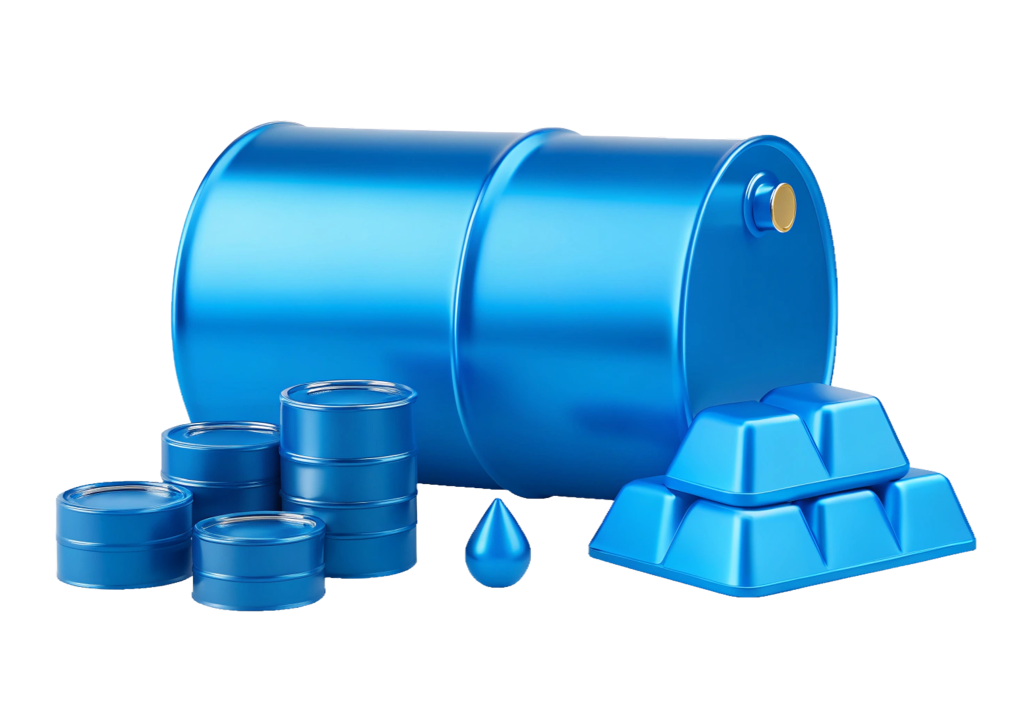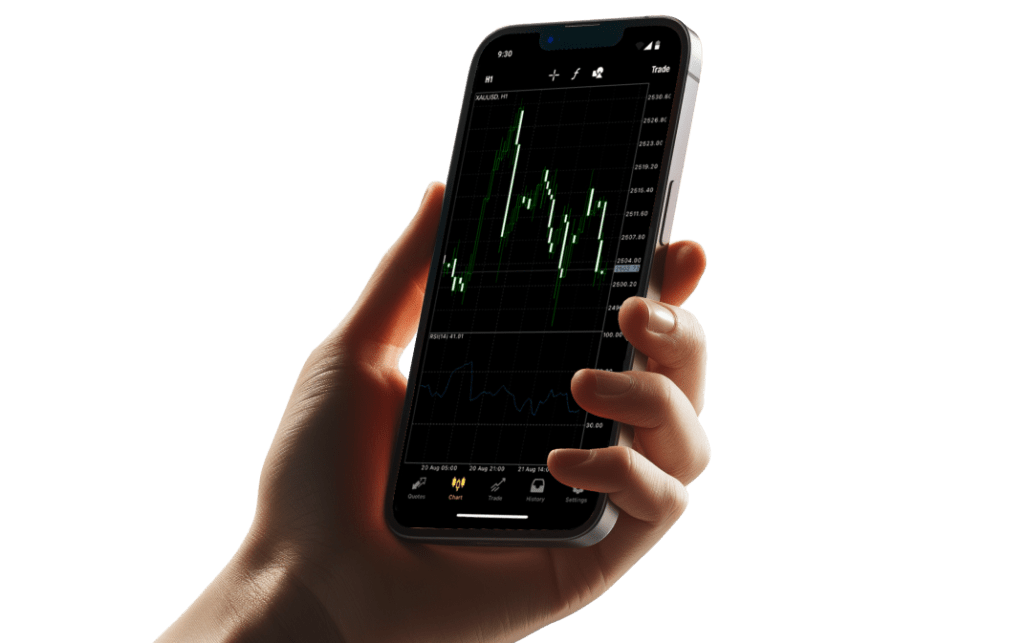Trade commodities
with confidence
Access the global market and trade commodities
like gold, silver, and oil with the lowest spreads.

Why choose JMarkets for trading commodities
Trade commodities your way, apply your preferred strategy, and reach your fullest investment potential.
Wide range of commodities
Broaden your investment strategy with a wide selection of popular commodities, including gold and silver, as well as various energy resources.
Fast withdrawals
Withdraw funds quickly and easily. Select from multiple payment options and enjoy swift approval of your requests.
Low and stable spreads
Trade XAUUSD, XAGUSD, BRENT, and XNGUSD with spreads starting from 0.2 pips, and experience stability even during high volatility.
Ultra-fast execution
Experience rapid execution with ultra-fast order speeds to stay ahead in fast-paced trading.
Slippage protection
Trade confidently with slippage protection that guarantees your trades are executed at the anticipated prices.
Trade on any device
Access the world’s most popular trading platform, MetaTrader 4/5, from your desktop, browser, or mobile.
Spreads and swaps for commodity market
Avg.spread
pips
Commission
per lot/side
Margin
1:3000
Long swap
points
Short swap
points
Stop level*
pips
Standard
Metals
Oil
Commodities market conditions
Trade industry-leading commodities like gold and oil 24/5 with instant execution and excellent trading conditions.
Trading hours
The commodity market operates from Monday 01:02 to Friday 23:59, with certain pairs following unique schedules. Refer to the detailed opening times for specific instruments:
| Instrument | Trading hours | Daily break |
| XAGEUR, XAUAUD, XAUEUR, XPDUSD, XPTUSD, XAGUSD, XAUUSD | Monday 01:02 – Friday 23:58 | 23:58 – 01:01 |
| WTI, XNGUSD | Monday 01:02 – Friday 23:59 | 23:59 – 01:02 |
| BRENT | Monday 03:02 – Friday 23:59 | 23:59 – 03:02 |
All timings are in server time (GMT+3).
Average spreads
Stock market spreads often vary. The spreads mentioned above represent averages from prior trading days. Visit our platform for the latest updates.
Periods of low liquidity, such as daily breaks, may cause spreads to increase temporarily until normal conditions return.
For the most competitive rates, explore our Raw Spread account, where spreads start as low as 0.1 pips.
Swap-free trading
A swap is an interest fee applied to trading positions left open overnight. Swap rates differ between various trading pairs and are applied at 22:00 GMT+3 daily, excluding weekends, until the position is closed. On Wednesdays, swaps are tripled to cover the weekend’s funding costs.
For instruments marked as “Extended Swap-free available” in the table, you won’t incur any swap charges if your account is swap-free.
All customer accounts, regardless of the country, are automatically granted swap-free status.
*Swap-free trading is unavailable for the following instruments: XNGUSD, WTI, BRENT.
Stop level
The stop level is the minimum acceptable distance between the desired position opening price and the current (market) price when setting a pending order (Stop Loss, Take Profit, Buy/Sell Stop, Buy/Sell Limit). The stop level helps reduce the risk of price slippage during periods of volatility and ensures more reliable execution of pending orders.
Note that the stop level values provided in the table are flexible and might not be applicable for traders that use specific high-frequency strategies or Expert Advisors.
Fixed margin requirements
Margin requirements for commodities are consistent but adjust according to your leverage settings. Maximum leverage depends on your account equity:
- For XAUUSD, XAGUSD, XAGEUR, XAUEUR, and XAUAUD, the maximum leverage is set at 1:3000.
- For XPDUSD and XPTUSD, leverage is set at 1:100.
- For BRENT, WTI, and XNGUSD, leverage is set at 1:200.
While margin requirements are generally fixed, they may temporarily increase during specific periods of higher volatility or risk.
Dynamic margin requirements
Margin requirements adjust based on the leverage you choose for your account. Changing your leverage directly impacts your margin needs. Similarly, just as spreads fluctuate with market conditions, the leverage available to you may also vary. Several factors, outlined below, can contribute to these changes.
Leverage
Maximum leverage changes based on your account’s equity:
| Equity, USD | Maximum leverage |
| 0 – 999 | 1:3000 |
| 1,000 – 4,999 | 1:2000 |
| 5,000 – 29,999 | 1:1000 |
| 30,000 or more | 1:500 |
*Energy instruments have different maximum leverage depending on their specifications.
Economic news
From 5 minutes before until 5 minutes after high-impact economic news, margin requirements for new positions opened on affected trading instruments are calculated with reduced maximum leverage.
Refer to our Economic calendar for updates.
Rollovers, weekends, and holidays
During rollovers, weekends, and public holidays, some instruments may have adjusted leverage and higher margin requirements.
Read more about the high margin requirements here.
MetaTrader mobile apps
Access MT4 and MT5 platforms on your Android or iOS device — trade on the go, be in line with the market, and never miss a thing.

Frequently asked questions
What are commodities?
Commodities are raw materials or agricultural products traded globally, including energy (oil, gas), metals (gold, silver), and crops (wheat, coffee). They are essential for producing goods and services.
What can be traded in the commodity market?
In the commodity market, traders can explore various instruments, including futures contracts, options, exchange-traded funds (ETFs), and contracts for difference (CFDs). On our platform, commodities can be traded exclusively in the form of CFDs, allowing you to speculate on price movements without the need for physical ownership.
What are the top commodities for investment?
Crude oil (WTI and BRENT), gold, and natural gas are often considered the top commodities for investment. These assets are highly liquid, widely used, and known for their potential price volatility, offering opportunities for profit.
What are the key risks in commodity trading?
Trading in commodities involves several risks, including: Market volatility — price fluctuations can be sudden and significant. Geopolitical risks — events like conflicts or policy changes can impact prices. Supply and demand dynamics — shifts in production levels or consumer demand can affect values. Weather conditions — agricultural commodities are especially vulnerable to climate factors. Traders should also be mindful of risks associated with leverage and margin trading.
How do pending orders, stop loss, and take profit work?
Pending orders — instructions to buy or sell a commodity at a specified price in the future. Stop loss (SL) — a risk management tool that automatically closes a trade to limit potential losses. Take profit (TP) — automatically closes a trade once a favorable price target is achieved. Effectively setting SL and TP levels requires understanding market volatility and aligning with your risk tolerance.